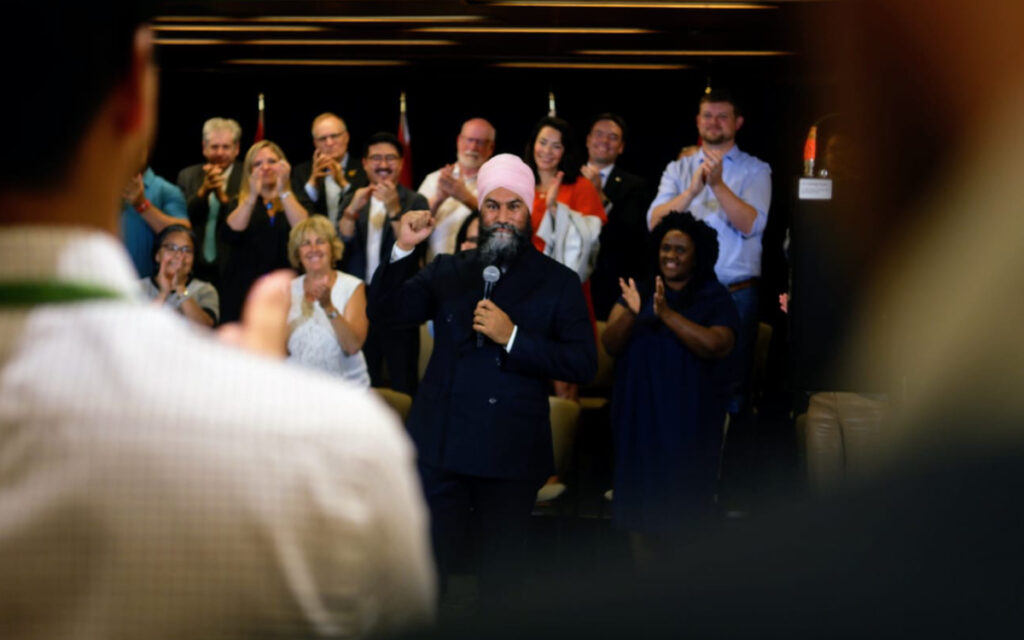
NDP Leader Jagmeet Singh. Photo credit: Twitter/Jagmeet Singh
The Liberal-NDP supply and confidence agreement will go down in future history books as one of the greatest political achievements of the Trudeau government. Since the agreement was socialized more than a year and a half ago, it’s all but guaranteed the Prime Minister a pass to govern as though he has a majority of seats in the House of Commons.
Instead of succumbing to the typical best before date of previous minority governments, the Trudeau government is expected to avoid an election until at least 2025. This is a feat, especially when you consider the events that have taken place since last spring when the deal was brokered: two federal budgets, the election and subsequent rise in the polls of a new Conservative leader, war between Russia and Ukraine and now Israel and Gaza, and accusations of foreign interference against two of the world’s largest economies. What’s more incredulous is that this is just the laundry list that grabbed headlines.
Despite significant domestic and international events, there have been few, if any instances where it appeared the agreement was in jeopardy of being proverbially torn up. For better or worse, the Liberals and NDP have been desperate dance partners that have had no choice but to keep moving in sync despite serious errors on part of the government.
Unfortunately for the Prime Minister, all good things must come to an end, and we might be closer to that best before date than originally anticipated.
Last week’s NDP convention brought forward a motion by delegates that gave permission to NDP Leader Jagmeet Singh to put an end to the agreement if the Liberals fail to introduce “a universal, comprehensive, and entirely public pharmacare program.”
The Trudeau government has indicated they plan to introduce pharmacare legislation before the end of the year, but there are certain economic realities that will make it difficult to achieve the kind of single-payer pharmacare system that would appease NDP supporters.
The NDP’s health critic has indicated pharmacare is their “red line” when it comes to what they expect to get in return for continuing to prop up the Liberal government. But if the Liberals call their bluff, are the NDP really going to call it quits on the agreement?
The answer is more complicated, and Singh is stuck between a rock and a hard place. The reality is the NDP face a tough road in a general election and have failed to move the needle of public opinion polls since the last election. Despite scoring some wins on affordability and dental measures, the next election will be a horse race between the Conservatives and Liberals.
If the Liberals don’t introduce a single-payer pharmacare system, and Singh continues to uphold the supply and confidence agreement, it will be seen as a failure among NDP supporters. While the NDP leader may be able to avoid a disgruntled membership for an indeterminate period, he need only look at the legacy of former Conservative Leader Erin O’Toole to know how this story will play out.
It is never truer than in the political arena that hindsight is 50-50. The deal that allowed Singh to deliver unprecedented legislative victories as the leader of the fourth party in the House of Commons will very likely spell his demise. History may not be so kind on his legacy.

Josie Sabatino is a Senior Consultant at Summa Strategies, focused on providing strategic insight and helping clients meet their objectives in an ever changing and complex political and regulatory environment. Prior to joining Summa, Josie spent nearly a decade in political communications and most recently served as the Director of Communications to the Hon. Erin O’Toole, former Leader of the Official Opposition.




















